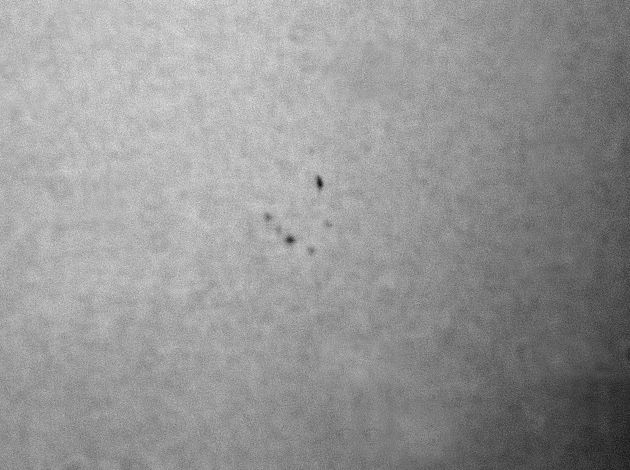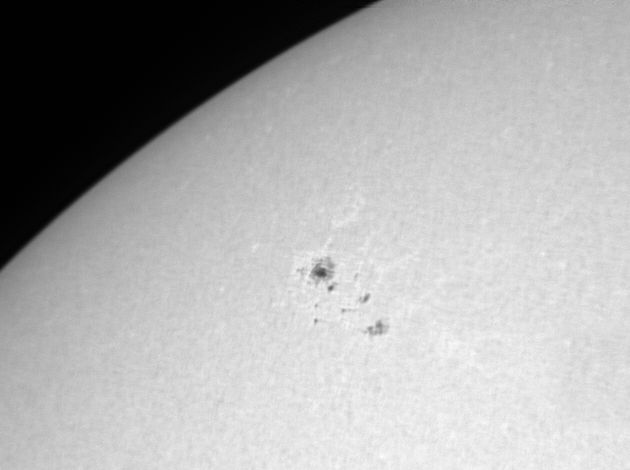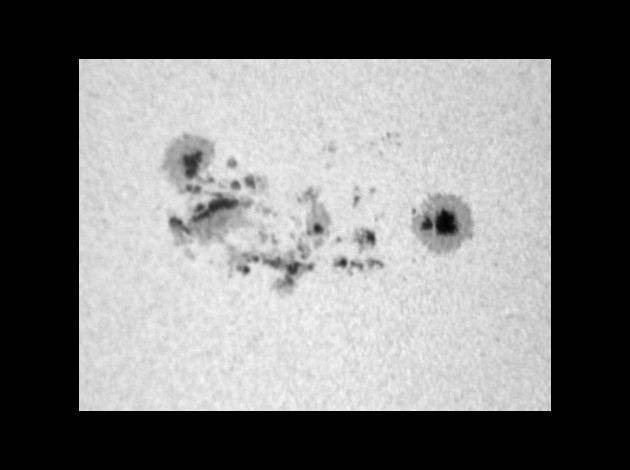

WARNING! The Sun is extremely dangerous. Looking at it
with any sort of optical aid will result in instant blindness.
Look here to
see how I do it.
Sunspot group 11167 did not last until my next session, but 11169 appeared. So here is a single picture of group 11167, taken on the 4th of March, and two pictures of 11169, taken on the 7th and 8th of March.
|
Sunspot Designations |
Sunspots and Active Regions are numbered by the American National Oceanic and Atmospheric Administration (NOAA) and started on 5th January 1972. These numbers now exceed 10000 but often the first or the first two digits are omitted. The designations of current sunspots can be found on the SOHO site. A most useful archive of diagrams of the Sun showing the positions and designations of sunspots on a daily basis right back to January 1992 is available from The Institute for Astronomy, University of Hawaii. This link will take you to their archive page from where you can select a given image by date or browse by month. I find this particularly useful if I have imaged an interesting spot after some days of cloud, and I can look back and see when the spot appeared. |

|
Sunspot group 11167 taken when it was near the centre of the disc. Date and Time: 4 March 2011, 14:12 UT Camera: DMK 21AF04 Telescope: ETX125 at prime focus Capture: ICCapture. 1/367", gain 668, 3600 frames Processing: Registax. 117 frames stacked. Wavelets 1,2 = 10, histogram 140-255 |

|
By the 7th of March spot 11167 had disappeared to my view, but 11169 had appeared. By looking at the maps at the Institute of Astronomy I can see that the group was not there on the 6th, so it has not appeared around the limb but has been created within the previous 22 hours. Date and Time: 7 March 2011, 14:06 UT Camera: DMK 21AF04 Telescope: ETX125 Capture: ICCapture. 1/618", gain 285, 3600 frames Processing: Registax. 97 frames stacked. Wavelets 1-2 = 10, histogram 0-170 |

|
This picture of group 11169 was taken the next day with my LX200. I have reduced the image to give it the same scale as the other one above, but you can see how much bigger the group has become. If you would like to see the full-sized image, move your mouse pointer over the imge. Date and Time: 8 March 2011, 12:10 UT Camera: DMK 21AF04 Telescope: 270mm SLR lens Capture: ICCapture. 1/436", gain 480, 3600 frames Processing: Registax. 100 frames stacked. Wavelets 1-2 = 10, histogram 0-190 |